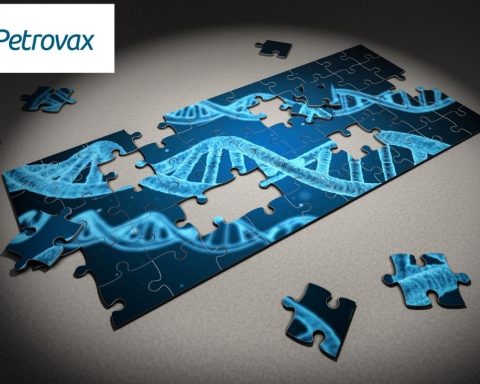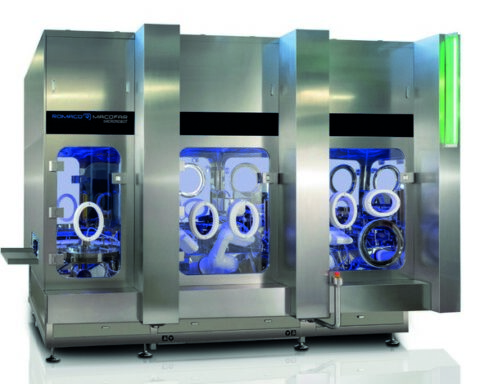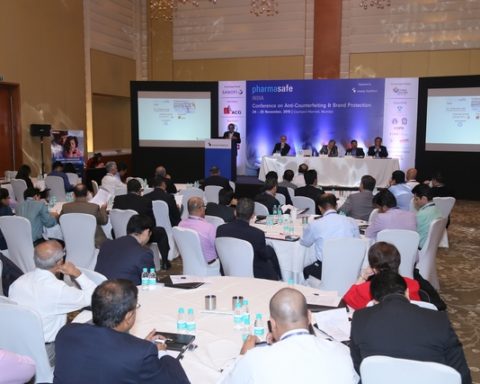1.9 billion potential inspectors worldwide: manufacturers and consumers can verify authenticity of drugs with a smartphone app anytime, anywhere
Innovative recognition app for smartphones ensures detection of counterfeit products throughout the distribution chain.
Approximately 2,000 people die every day from consuming counterfeit medicines. In 2019, an EU directive enters into the force that requires safety labeling for prescription drugs to reduce the risk to consumers. In order to effectively prevent piracy, counterfeit products must not only be clearly identified, but pharmaceutical manufacturers must also know where the counterfeits enter their supply chain and where gray market shifts occur. The Swiss security company U-NICA has developed a new method, which enables a continuous authentication of products, providing comprehensive anti-counterfeiting protection over the whole supply chain. The technology, scryptoTRACE, is a reliable pattern recognition method, which detects certain codes on a label or packaging that are otherwise imperceptible to the eye. The app is simply installed on mobile devices such as smartphones or tablets. Manufacturers allow customers to verify the authenticity of their product using this app any time or at the point of sale.
In 2015, under Operation Pangea, Interpol seized a record number of 20.7 million counterfeit drugs with an estimated value of 81 million US dollars. Counterfeit medicines pose an enormous health risk for consumers and are also a major economic problem for the pharmaceutical industry: “They damage the reputation of the industry and can lead to sales and customer losses,” explains Alfred Rutz, CEO of U-NICA Group. “The end consumer loses confidence in the medicine or the manufacturer of the medicine and then replaces it with another,” adds Rutz. An update to the EU Falsified Medicines Directive from February 2016 includes provisions for unique barcoding and anti-tampering features that can prove a pharmaceutical product’s authenticity. Since all pharmaceutical manufacturers must meet these requirements by 2019, forgery-proof marking methods are becoming worldwide increasingly important in the sector. In the USA and Asia, there are also already similar regulations either implemented or in planning.
Control over the entire supply chain
”To successfully combat counterfeiting, however, it is not only sufficient to identify plagiarism,” says Rutz. “Pharmaceutical companies should also know about how exactly the forgeries reach their distribution chain, where the gray market emerges, and how the goods are being moved.” U-NICA has therefore developed an innovative security solution that not only meets the requirements of the regulation but unlike alternative technologies can also ensure a comprehensive and effective protection against counterfeiting: scryptoTRACE fills a gap in the existing range of security solutions. It allows, for the first time, the authenticity of branded products, from manufacture, to the point of sale, to be checked at all critical points. The producers are made aware, both globally and in real-time, of the emergence of a counterfeit issue or gray market movements.
scryptoTRACE is based on dynamic digital markings, which are integrated by print into drug packaging. The codes are generated by the scryptoTRACE server by the pharmaceutical manufacturers themselves. They are managed and used as flexibly as needed. Only the original print layout is needed to perform the encoding. The layout and the printing processes remain unchanged, without numerous printers being used, which may be a security vulnerability in certain countries. “The software-based security solution can be scaled very effectively. Therefore, expenses for conventional security solutions of a manufacturer can be drastically reduced,” explained Rutz.
Control via commercial smartphones
For this purpose, samples at various checkpoints will be taken along the distribution chain with a standard smartphone or a tablet. Just photographing the code imprint is sufficient, and the app responds within seconds, whether the product is genuine or counterfeit. The result will then be transmitted, along with important information such as date, time, location, and user identity via the mobile network or data connection to the corporate headquarters. The pharmaceutical company learns immediately where counterfeit or gray market products are in circulation. The producer can evaluate the collected data and efficiently identify the risk and quantify. By automatically synchronizing with the scryptoTRACE server (on which all information is stored), the company can accurately analyze their supply chain and the effectiveness of their brand protection measures, precisely optimize and use the resources effectively. The encoding can be matched to different print runs and is easily changed for criteria such as validity period or sales channel. This effective method increases the reliability of the detection of counterfeits and gray market movements and additionally provides differentiated information about the distribution process and customer behavior.
As the technology uses conventional smartphones and tablets, it can be used globally and offline, which makes it very user-friendly: “A key advantage is that employees, inspectors, customs, police or other partners along the national or global distribution chain are able to select a product and test it, without special training or expensive readers,” says Rutz. The process requires minimal investment or change in business processes. It can be introduced and scaled without long lead times. Therefore, global companies with complex organizational structures and products with high-risk potential reap maximum benefits. This solution fills a gap in the existing range of security solutions and offers combined with an existing logistics
solution a powerful yet cost-effective solution for serialization and traceability of original products. It is significantly more economical than conventional methods.
End consumers verify in the future
Moreover, scryptoTRACE offers brand owners the additional option to interact with end consumers, to build on trust: “Through the app, manufacturers can enable every smartphone or tablet user to verify the authenticity of a product at the point of sale,” says Rutz. “An end consumer can perform verification with their own smartphone, rather than having to rely on someone else. This creates confidence in the brand and enhances customer loyalty.” There are no costs for the end consumer. Of great importance is that the app can be used anywhere in the world and at any time regardless of whether the user is connected to a wireless or mobile network.
The direct verification by customers or consumers, however, could still have a more important side effect: “If the consumer can identify fakes at the point of sale, this places pressure on those involved in the distribution chain to ensure that fewer fakes enter the market. Sales points that deal with counterfeits may become publicly known,” explains Rutz. “Therefore, producers would no longer be alone in fighting the global counterfeiting problem. Costly inspections and detection methods would no longer be required. A potential global verification team of 1.9 billion consumers with smartphones will support future campaigns in deterring the trade in counterfeits significantly more than any previous actions.”
System for different industries
The security solution is suitable for almost any industry, such as the cosmetics or food industries. The security solutions provider U-NICA is active in various industries, promoting its product protection solutions. For example, U-NICA has entered into a distribution agreement with the international pharmaceutical ingredients trader Fischer Chemicals AG, which also offers the solution to its customers. Furthermore, the method can be used in many other industries, for example in the aftermarket or electronics industry, in order to identify and control the distribution chain forgeries. Renowned multinational corporations, who would want to protect their valuable brands, are already using the solution worldwide or are in the global rollout. The demand is growing steadily. “We can already count the top industry leaders among our clientele,” explains Rutz.
High-tech company introduces further innovation to the market
Also in the medical sector, U-NICA has tested successfully its digital security solutions under the brand name scryptoTRACE as a “fingerprint” solution. The system was developed and tested with a leading manufacturer of surgical equipment as part of a Swiss nationally-funded technology project to identify original parts by their surface structure. “The partner company discovered counterfeit consumables in the market and received eyewitness accounts reporting that single-use parts were being used repeatedly,” says Rutz. “In one case, the same supposedly-sterile product was used for several different patients.” The scryptoTRACE fingerprint solution, which reliably detects existing random patterns of material surfaces, rather than added encodings, was used to identify unused original products and consumables in real time. Therefore, it alerts medical personnel during surgical procedures to contact with potentially contaminated materials. It also warns that the product has been in use or does not come from the original manufacturer. The use of consumables that may have been produced in a non-sterile environment can thus be excluded from surgery.
The technology can also be used in such a way that equipment can only function if original consumables are being used, which in turn allows other applications. U-NICA will bring this solution as a world’s first on the market by the end of 2016. The solution provider specifically focuses on quality and system-critical products with high liability risks such as medical equipment and supplies in the health sector, spare parts for the aircraft and vehicle industry, other industrial goods and systems or valuable items such as branded watches, precious metals or gold coins.
About U-NICA
U-NICA® was founded by Alfred Rutz, an expert in the security of banknotes, in 2004 and since successfully built up international groups of companies. The broad product and technology portfolio includes exclusively innovative security technologies for the global market, particularly in the field of document security (banknotes, ID, passports and similar safety-critical documents), as well as product and brand protection. The company, which is headquartered in Malans in Switzerland temporarily holds more than 300 patents worldwide. U-NICA operates globally and has five locations in Germany and Switzerland, and sales offices in Asia and the US. The company has already implemented several global major projects successfully with renowned industry leaders. In 2015, the company was restructured and split into two independent groups of companies: U-NICA Holding holds the investments in the U-NICA Group, which mainly deals with physical and digital product and brand protection solutions, and at the ACTILOR group on biotechnology solutions for the high Security and Life Science focusses.








